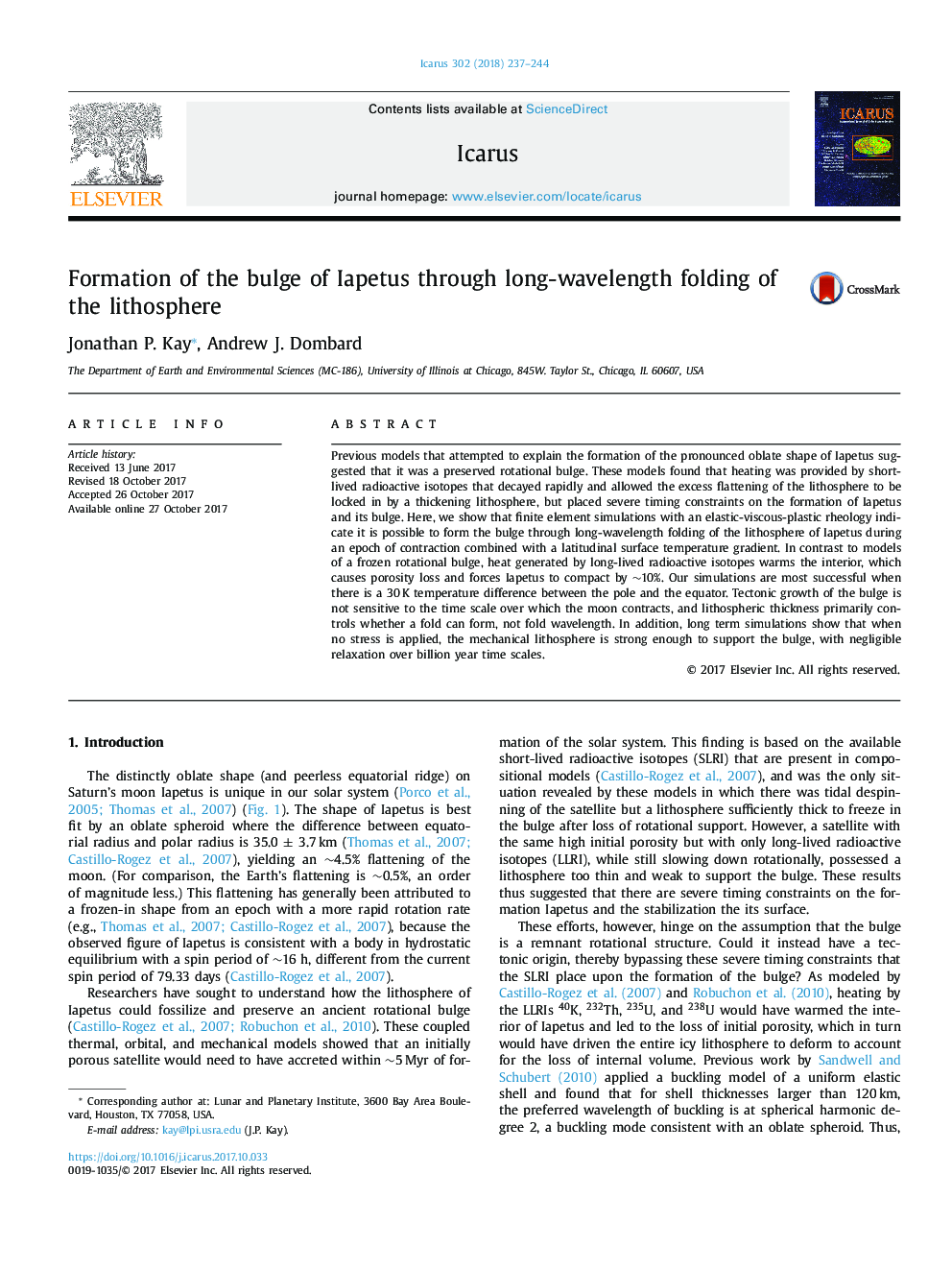| کد مقاله | کد نشریه | سال انتشار | مقاله انگلیسی | نسخه تمام متن |
|---|---|---|---|---|
| 8134549 | 1523489 | 2018 | 8 صفحه PDF | دانلود رایگان |
عنوان انگلیسی مقاله ISI
Formation of the bulge of Iapetus through long-wavelength folding of the lithosphere
ترجمه فارسی عنوان
شکل گیری باقیمانده یپتوس از طریق تاول زدن طولانی طول موج لیتوسفر
دانلود مقاله + سفارش ترجمه
دانلود مقاله ISI انگلیسی
رایگان برای ایرانیان
موضوعات مرتبط
مهندسی و علوم پایه
علوم زمین و سیارات
علوم فضا و نجوم
چکیده انگلیسی
Previous models that attempted to explain the formation of the pronounced oblate shape of Iapetus suggested that it was a preserved rotational bulge. These models found that heating was provided by short-lived radioactive isotopes that decayed rapidly and allowed the excess flattening of the lithosphere to be locked in by a thickening lithosphere, but placed severe timing constraints on the formation of Iapetus and its bulge. Here, we show that finite element simulations with an elastic-viscous-plastic rheology indicate it is possible to form the bulge through long-wavelength folding of the lithosphere of Iapetus during an epoch of contraction combined with a latitudinal surface temperature gradient. In contrast to models of a frozen rotational bulge, heat generated by long-lived radioactive isotopes warms the interior, which causes porosity loss and forces Iapetus to compact by â¼10%. Our simulations are most successful when there is a 30â¯K temperature difference between the pole and the equator. Tectonic growth of the bulge is not sensitive to the time scale over which the moon contracts, and lithospheric thickness primarily controls whether a fold can form, not fold wavelength. In addition, long term simulations show that when no stress is applied, the mechanical lithosphere is strong enough to support the bulge, with negligible relaxation over billion year time scales.
ناشر
Database: Elsevier - ScienceDirect (ساینس دایرکت)
Journal: Icarus - Volume 302, 1 March 2018, Pages 237-244
Journal: Icarus - Volume 302, 1 March 2018, Pages 237-244
نویسندگان
Jonathan P. Kay, Andrew J. Dombard,
